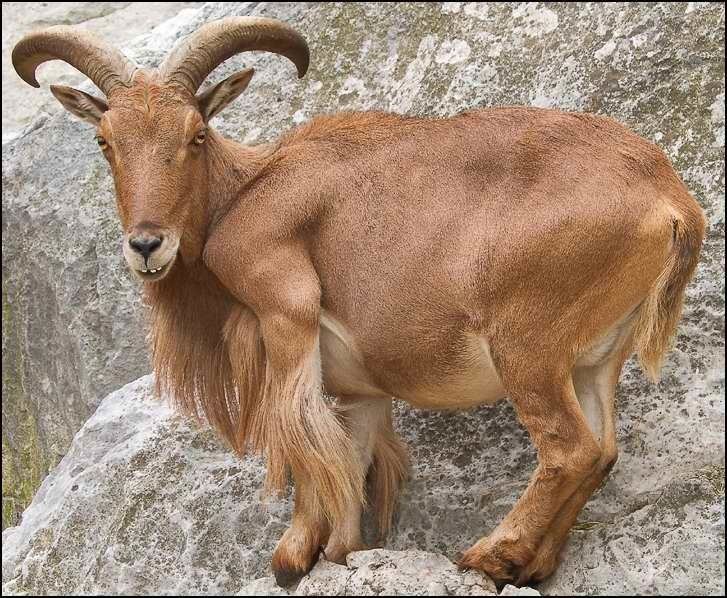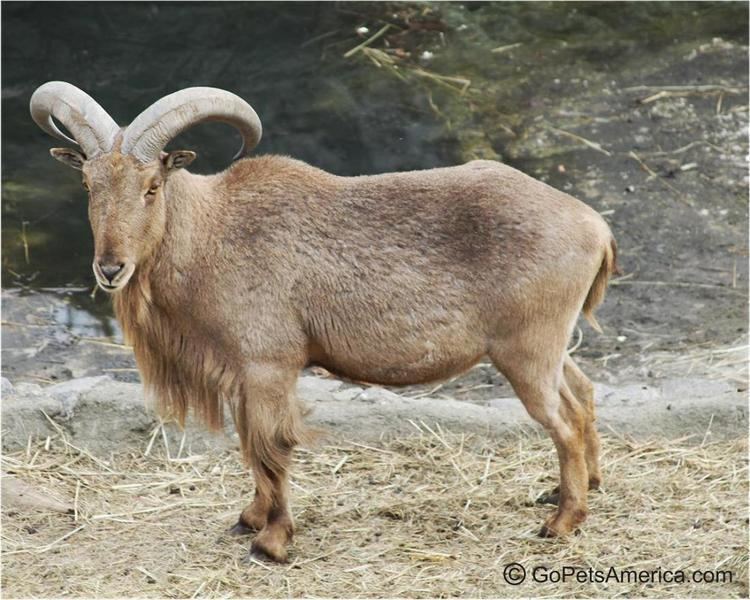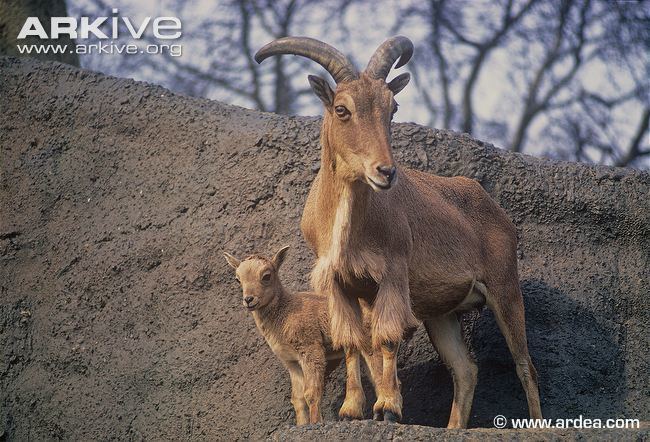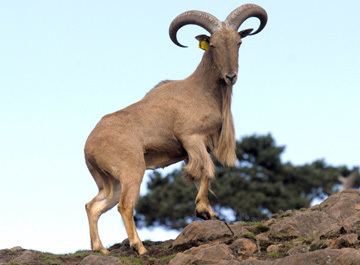Genus AmmotragusBlyth, 1840 Mass 40 – 140 kg (Adult) Higher classification Ammotragus | Order Artiodactyla Scientific name Ammotragus lervia Phylum Chordata Rank Species | |
 | ||
Height 80 – 100 cm (Adult, At Shoulder) Similar Blackbuck, Mouflon, Ovis Orientalis, Addax, Fallow deer | ||
Ram screaming like a human barbary sheep
The Barbary sheep (Ammotragus lervia) is a species of caprid (goat-antelope) native to rocky mountains in North Africa. Six subspecies have been described. Although it is rare in its native North Africa, it has been introduced to North America, southern Europe, and elsewhere. It is also known as aoudad, waddan, arui, and arruis.
Contents
- Ram screaming like a human barbary sheep
- Barbary sheep hunting
- Description
- Natural range
- Introduced populations
- Taxonomy
- Habitats
- Names
- References

Barbary sheep hunting
Description

Barbary sheep stand 80 to 100 cm (2.6 to 3.3 ft) tall at the shoulder and weigh 40 to 140 kg (88 to 309 lb). They are sandy-brown, darkening with age, with a slightly lighter underbelly and a darker line along the back. Upper parts and the outer parts of the legs are a uniform reddish brown or grayish brown. There is some shaggy hair on the throat (extending down to the chest in males) and a sparse mane. Their horns have a triangular cross section. The horns curve outward, backward, then inward, and reach up to 50 cm (20 in). The horns are fairly smooth, with slight wrinkles evident at the base as the animal matures.
Natural range

Barbary sheep naturally occur in northern Africa in Algeria, Tunisia, northern Chad, Egypt, Libya, northern Mali, Mauritania, Morocco, Niger and Sudan (west of the Nile, and in the Red Sea Hills east of the Nile).
Introduced populations

Barbary sheep have been introduced to southeastern Spain, the southwestern United States (Chinati Mountains on La Escalera Ranch, Guadalupe Mountains National Park, Palo Duro Canyon, the Trans-Pecos, and other parts of Texas, New Mexico, and California), Niihau Island (Hawaii), Mexico, and some parts of Africa.

They have become common in a limited region of south-eastern Spain, since its introduction in 1970 to Sierra Espuña [Regional park] as a game species. Its adaptability enabled it to colonise nearby areas quickly, and private game estates provided other centers of dispersion. The species is currently expanding, according to recent field surveys, now being found in the provinces of Alicante, Almería, Granada, and Murcia. This species is a potential competitor to native ungulates inhabiting the Iberian Peninsula. The species has also been introduced to La Palma (Canary Islands), and has spread throughout the northern and central parts of the island, where it is a serious threat to endemic vegetation.
Taxonomy

A. lervia is the only species in the genus Ammotragus. However, some authors include this genus in the goat genus Capra, together with the sheep genus Ovis.
The subspecies are found allopatrically in various parts of North Africa:
Habitats
Barbary sheep are found in arid mountainous areas where they graze and browse grasses, bushes, and lichens. They are able to obtain all their metabolic water from food, but if liquid water is available, they will drink and wallow in it. Barbary sheep are crepuscular. That is they are active in the early morning and late afternoon and rest in the heat of the day. They are very agile and can achieve a standing jump of over 2 metres (7 ft). They are well adapted to their habitat, which consist of steep rocky mountains and canyons. They often flee at the first sign of danger, typically running uphill. They are extremely nomadic and travel constantly via mountain ranges. Their main predators in North Africa were the Barbary leopard, the Barbary lion, and caracal, but now only humans threaten their populations.
Names
The binomial name Ammotragus lervia derives from the Greek ammos ("sand", referring to the sand-coloured coat) and tragos ("goat"). Lervia derives from the wild sheep of northern Africa described as "lerwee" by Rev. T. Shaw in his "Travels and Observations" about parts of Barbary and Levant.
The Spanish named this sheep the arruis, and the Spanish Legion even used it as a mascot for a time.
Aoudad ([ˈɑː.uːdæd]) is the name for this sheep used by the Berbers, a North African people, and it is also called arui and waddan (in Libya).
A group of Aoudad is referred to as an "Anger".
